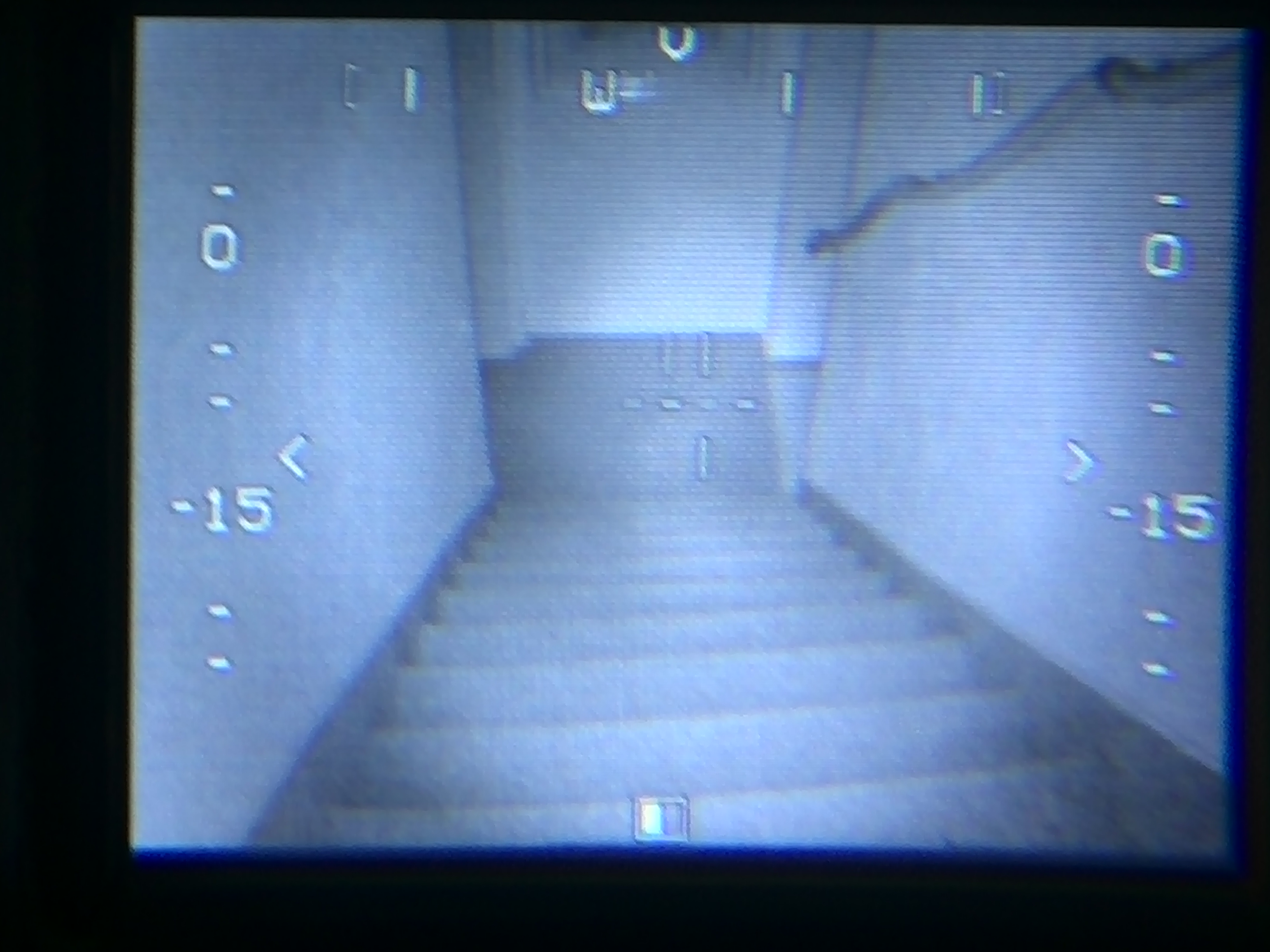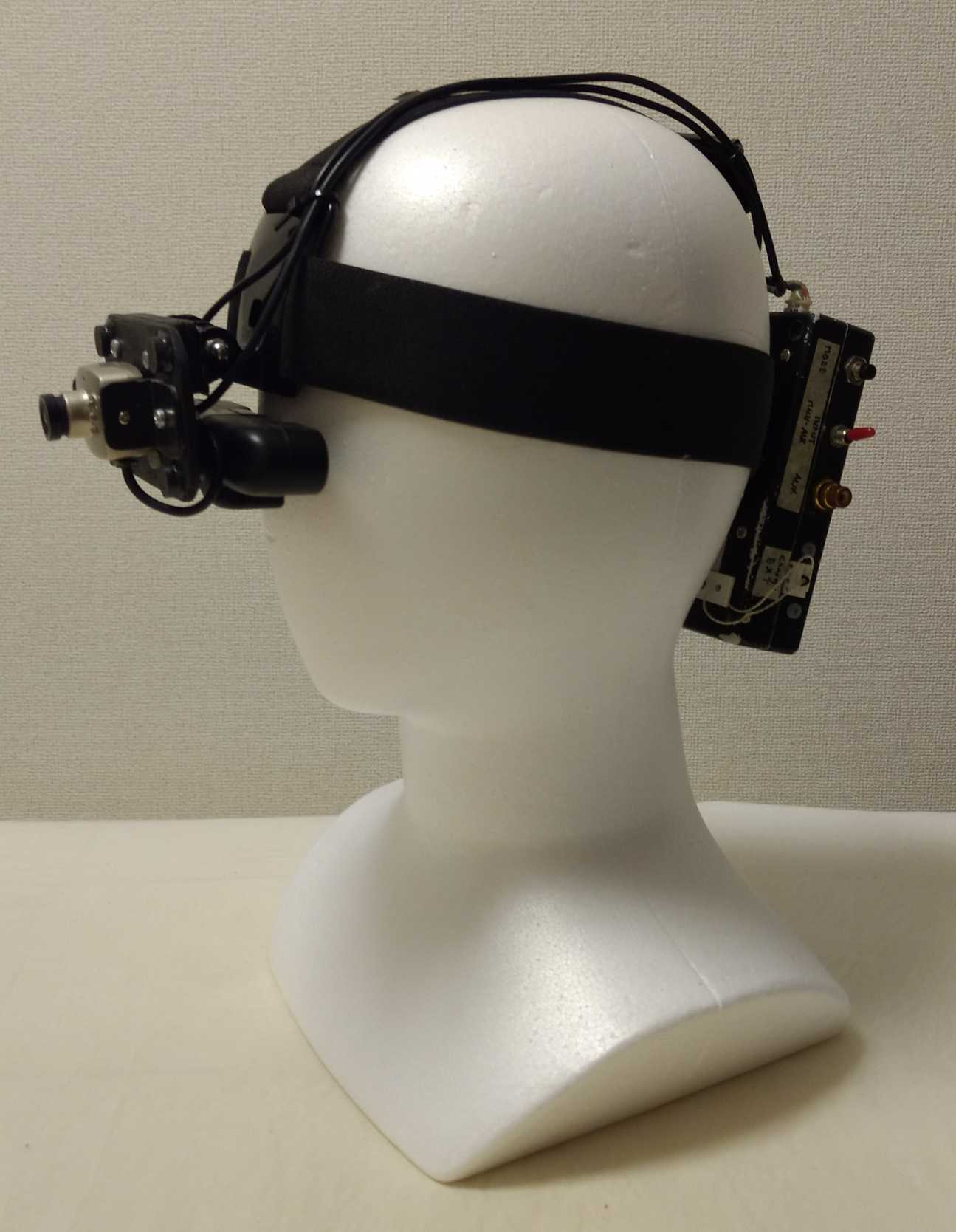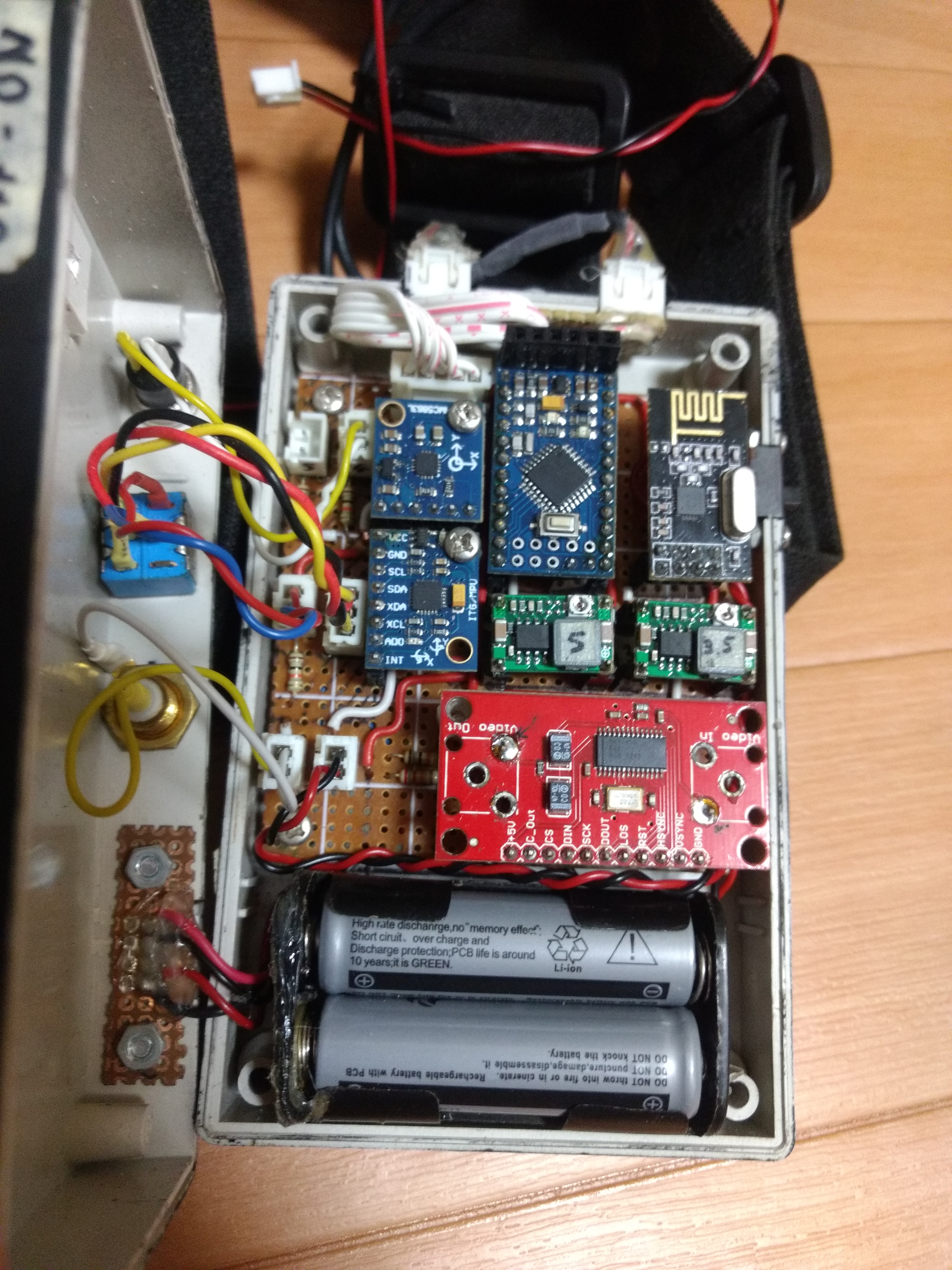HUD Goggles
This headset enables the overlay of information on top of its user’s field of view. The field of view of the user is captured by a camera and then fed to video goggles, while a MAX7456 OSD chip overlays text on the video feed.
The front camera has been chosen to be sensitive to near infrared light, which allows the device to be used as night vision goggles when paired with IR projectors.
The video input source can be changed to any composite signal, which allows for example the user to see the feed from a drone’s camera or to use have a head mounted display for a raspberry pi.
Various information can be displayed in the glasses. In the default mode the user’s heading and head angle are shown. This is achieved using the MPU-6050 and HMC5883L sensors integrated in the unit.
Other modes include displaying the location of a GPS beacon by wirelessly connecting to a GPS tracker or the status of wireless motion sensors. This is achieved using the built-in NRF24L01+ transceiver of the glasses.
On the other hand, external video input can be used to see the video feed from a wireless camera mounted on a pant-tilt platform. The latter can be controlled via NRF24L01+ and follow the motion of the user’s head.
Hardware
Here is a list of the parts used in this project:
- Video glasses
- Composite camera
- Arduino pro mini 5V
- MPU-6050 IMU
- HMC5883L Magnetometer
- NRF24L01+ transceiver
- MAX7456 OSD generator
- 2x DC-DC buck converter
- 2x 14500 Lithium-ion battery
And there is the schematic for the electronics:
The Schematic and more information about the hardware is available on OSHWLab.
Those parts are assembled in a enclosure sitting on the back of the user’s head, with the electronics mounted on a protoboard.
Software
The source code for the firmware running on the Arduino pro mini is available on GitHub.



